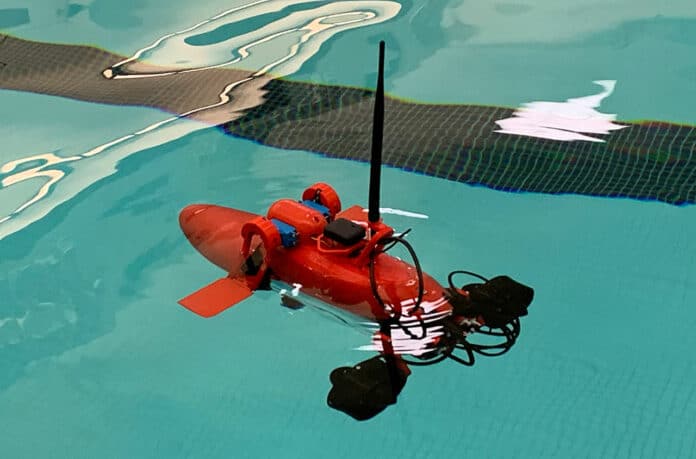An unmanned semi-submersible vehicle may prove that the best way to travel in water undetected and efficiently is not on top or below but in-between, according to a new study.
A semi-submersible vehicle has most of its body submerged in the water while keeping a small platform above the water surface for communication and access to atmospheric air. This vehicle has low visibility, good seaworthiness, and low-wave drag in certain speed regimes, and thus, it is potentially suited for special military and civil applications.
For their study, researchers at Washington State University built a remote-control model semi-sub measuring roughly 1.5 feet long and 4 inches in diameter. Built with off-the-shelf and 3D-printed parts, the prototype was tested in Snake River’s Wawawai Bay in Washington state, where it reached a max speed of 1.5 meters per second (roughly 3.4 miles an hour). The vehicle showed its seaworthiness in water tests, moving quickly with low drag and a low profile.
At higher speeds, the full-size semi-submersible vessel rises above the water, creating more of a wake and expending more energy than conventional surface-going ships. At lower speeds, it is almost fully immersed and barely makes a ripple. The semi-sub is also outfitted with sonar and mapped the bottom of a reservoir near Pullman, Washington, to test its ability to collect and transmit data.
The WSU semi-sub is not yet completely autonomous but can be pre-programmed to behave in certain ways, such as running a certain route by itself or responding to particular objects by pursuing them, or running away. While the WSU semi-sub is relatively small, researchers said it is possible for larger semi-subs to be built to carry significant cargo. They could be used to help refuel ships or stations at sea and could even be scaled up to rival container ships. In addition, since they experience less drag in the water, they would use less fuel, creating both an environmental and economic advantage.
“A semi-submersible vehicle is relatively inexpensive to build, difficult to detect, and it can go across oceans,” said Konstantin Matveev, the WSU engineering professor leading this work. “It’s not so susceptible to waves in comparison to surface ships since most of the body is underwater, so there are some economic advantages as well.”
Currently, Matveev’s lab is working on optimizing the shape of semi-submersible vehicle prototypes to fit specific purposes. He is currently collaborating with the U.S. Naval Academy in Annapolis, Maryland, to work on the vehicles’ operational capabilities and compare numerical simulations with results from experiments.
Journal reference:
- Pascal Spino and Konstantin I. Matveev. Development and Testing of Unmanned Semi-Submersible Vehicle. Unmanned Systems, 2022; DOI: 10.1142/S2301385023500048
